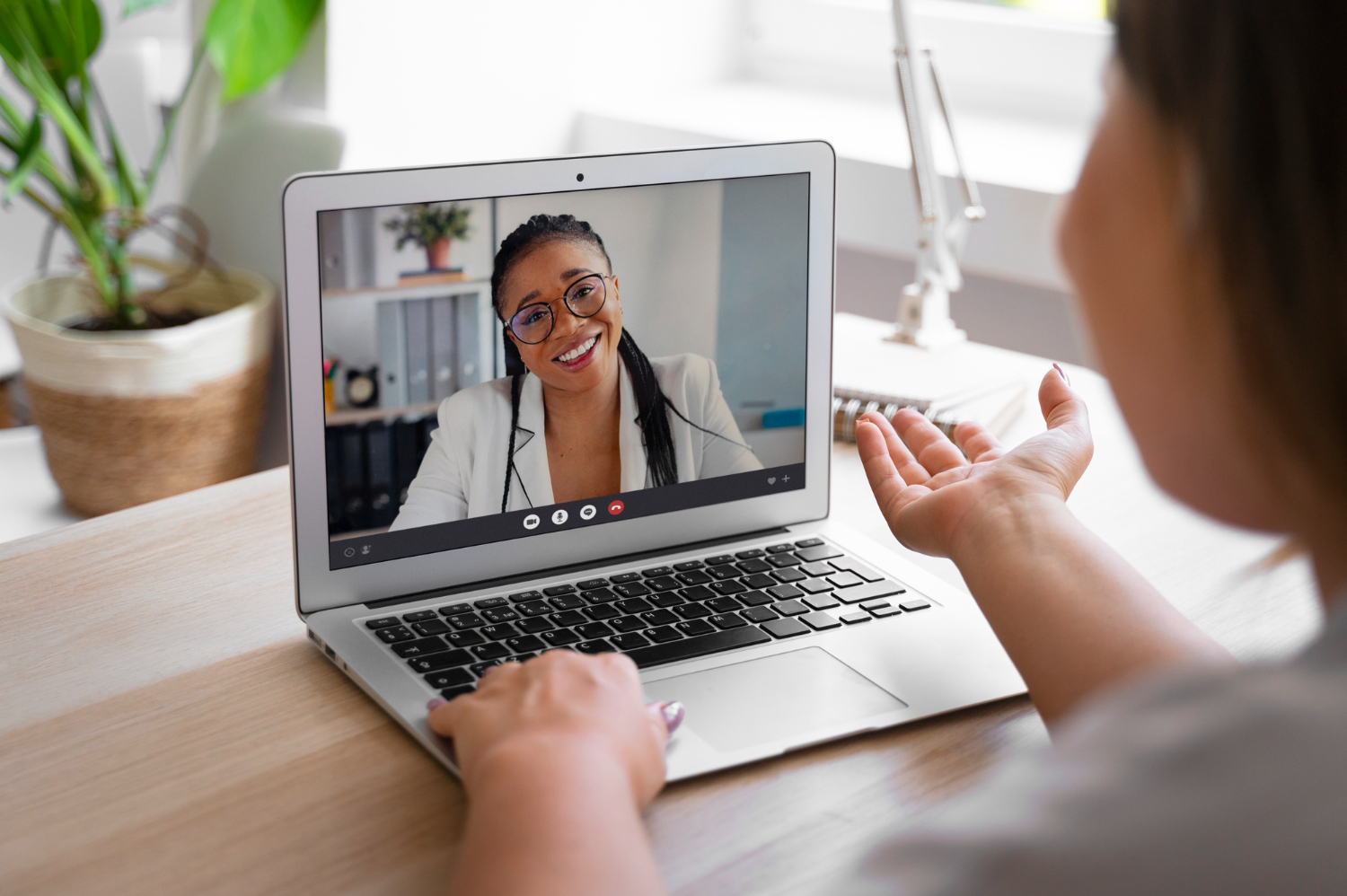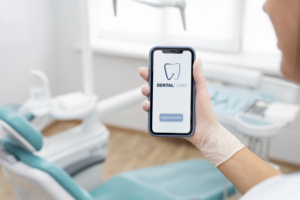Virtual orthodontics has become more common in recent years as more patients look for flexible treatment options. With remote check-ins and digital monitoring, it offers a new kind of convenience, especially for those who want fewer in-office visits. But the big question is, can you trust it?
Many people are curious about how reliable online treatment supervision really is. Does it work just as well as in-person visits? Are there risks to consider? These are valid concerns. Before starting any kind of remote orthodontic care, it’s important to understand how it works and who it’s meant for.
What Is Virtual Orthodontics and How Does It Work?
Virtual orthodontics refers to remote supervision of orthodontic treatment using digital tools. Instead of visiting the office for every check-up, patients send progress photos or use apps to stay in touch with their orthodontist.
How It Works:
- Photo submissions: Patients take regular images of their teeth using a smartphone.
- App-based monitoring: Some practices use AI-powered apps that track tooth movement.
- Video check-ins: These replace some in-office visits and allow the orthodontist to assess progress in real-time.
Who Offers It:
- Many local orthodontists now offer hybrid models combining in-person care and virtual check-ins.
- Direct-to-consumer aligner brands rely almost entirely on virtual orthodontics to manage treatment.
What’s Usually Needed:
- A smartphone with a camera
- Access to the provider’s app or online portal
- Willingness to follow instructions closely and report issues
While virtual orthodontics can work well for mild to moderate cases, it’s not a one-size-fits-all solution. It’s helpful to know when remote care makes sense—and when a hands-on approach is safer.
Benefits of Virtual Orthodontics for Patients
Virtual orthodontics offers more than just convenience. For many people, it makes the treatment process easier to manage. Here are a few key benefits that patients often appreciate:
1. Fewer In-Office Visits
You won’t need to travel to the orthodontist as often. Routine progress checks can be done from home, saving time and reducing scheduling stress.
2. Flexible Monitoring
Most platforms allow you to submit photos on your own time. This can work well for busy families, students, or professionals who can’t easily fit in appointments during the day.
3. Faster Feedback
Because updates are sent digitally, your orthodontist may spot issues sooner and respond quickly. This helps avoid delays in treatment.
4. Ongoing Support Between Appointments
You’re still connected to your orthodontic team. Virtual tools often make it easier to ask questions or report concerns in real-time without needing to wait for a visit.
5. Great for Certain Phases of Treatment
Virtual orthodontics is especially useful during clear aligner treatment or retainer monitoring, when fewer hands-on adjustments are required.
While these benefits appeal to many, it’s still important to check that the provider offers a high level of care—whether it’s in-person, virtual, or a combination of both.
Limitations and Risks: What Patients Should Know
Virtual orthodontics may sound convenient, but it’s not perfect for everyone. There are a few important limitations to think about before relying on remote supervision alone.
Missed Details Without Physical Exams
In-person visits allow orthodontists to physically examine your bite, teeth movement, and appliance fit. Photos and videos might not show everything clearly, especially subtle issues that could affect your results.
Technology Doesn’t Always Work Smoothly
Remote monitoring depends on tech—your phone, the app, and your ability to take good photos. Poor lighting, blurry images, or inconsistent uploads can lead to inaccurate assessments.
Limited Use for Complex Cases
More involved treatments, like those for severe bite issues or jaw alignment problems, typically need close, hands-on supervision. Virtual orthodontics isn’t usually enough in those situations.
Progress Can Stall Without Immediate Adjustments
Sometimes, appliances need quick fixes that only an in-person visit can solve. Waiting too long for care because everything is done remotely could slow treatment or lead to discomfort.
Not All Providers Offer Equal Support
Some platforms are less responsive than others. If you’re working with a direct-to-consumer brand, the level of care and follow-up may not match what you’d get from a licensed orthodontist.
Being aware of these risks can help you ask the right questions and choose a provider that prioritizes safety and results—not just speed and convenience.
Is Virtual Orthodontics Reliable? What the Research Says
The reliability of virtual orthodontics depends on the type of treatment, the provider, and how closely patients follow instructions. Research and expert opinions show that remote supervision can be effective—but only under the right conditions.
What Clinical Studies Show
- A 2021 study published in Telemedicine and e-Health found that remote monitoring can successfully track tooth movement in aligner treatment when supported by a licensed orthodontist.
- Another study in Progress in Orthodontics noted that virtual check-ins helped improve patient compliance, especially among teens using clear aligners.
When It Works Best
Virtual orthodontics is generally reliable for:
- Mild to moderate alignment issues
- Clear aligner treatments (like Invisalign)
- Patients who are consistent with remote uploads
- Retainer follow-ups after active treatment is complete
What Orthodontists Recommend
Most experts agree that a hybrid approach—combining in-person visits with virtual check-ins—is ideal. This ensures that any complications can still be caught early while giving patients flexibility.
Important Factors That Affect Reliability
- Patient engagement: Skipping updates or failing to follow care instructions can reduce effectiveness.
- Provider oversight: Working with a licensed orthodontist improves accuracy and safety.
- Treatment complexity: The more complex the case, the more in-person attention it usually requires.
So while virtual orthodontics can be reliable, it’s not a substitute for professional care. Used correctly, it can enhance treatment—but it shouldn’t replace hands-on expertise when it’s truly needed.
When to Opt for In-Person Visits Over Virtual Check-Ins
Virtual orthodontics can simplify the treatment process, but some situations call for face-to-face care. In certain cases, an in-person visit is the safest and most effective choice.
1. Complex Bite or Jaw Issues
Severe crowding, bite misalignment, or jaw irregularities often require detailed evaluations and manual adjustments that can’t be done remotely.
2. Braces Maintenance
Traditional braces involve brackets, wires, and elastics that may break or shift. These components must be inspected and adjusted in person to avoid setbacks in treatment.
3. Discomfort or Unexpected Pain
If you’re experiencing unusual pain or irritation, your orthodontist should take a close look. Photos can help, but they may not reveal the full cause of the issue.
4. Start of Treatment
Initial consultations, diagnostic scans, and fitting appliances usually require in-office visits. This helps your orthodontist create a safe and accurate treatment plan.
5. Retainer Adjustments or Replacements
Retainers need to fit precisely. Any warping, loss, or breakage should be addressed in the office to make sure your smile stays in place.
While remote tools can assist with day-to-day tracking, they’re not built for every phase of care. If something feels off or your treatment isn’t progressing, an in-person appointment is the right move.
Questions to Ask Before Choosing Virtual Orthodontics
Before committing to virtual orthodontics, it’s important to know what kind of care you’ll receive. Not all providers offer the same level of support or oversight. Asking the right questions can help you avoid frustration later.
Key Questions to Consider:
-
Is the provider a licensed orthodontist?
Make sure your treatment is being monitored by someone with proper training—not just a general dentist or a company representative. -
What technology is used for monitoring?
Ask if they use a dedicated app, photo submissions, or AI software. Clear communication tools are essential for accurate tracking. -
How often will I be monitored?
Find out how frequently your progress will be reviewed. Regular check-ins help keep your treatment on track. -
What happens if something goes wrong?
Understand their process for emergencies or if a correction is needed. Will you be able to get an in-person appointment if necessary? -
Can I switch between virtual and in-person care?
Some orthodontists offer hybrid models. It’s helpful to know if you can move between remote and in-office visits when needed.
Getting clear answers to these questions helps ensure that virtual orthodontics works safely and effectively for your specific case.
Take the First Step Toward Safer Orthodontic Care
Exploring virtual orthodontics? Get the confidence of expert supervision with personalized support at every stage. At Orthodontic Excellence, our approach blends convenience with trusted care—led by a skilled orthodontist in Newcastle who puts your smile and comfort first.
We offer flexible options, including in-person visits and virtual check-ins for patients using Invisalign in Newcastle or traditional braces in Newcastle. With modern tools and a commitment to great results, our team makes sure you stay on track no matter how you choose to check in.
Schedule your consultation with Orthodontic Excellence and experience orthodontic care that fits your life—without cutting corners.



